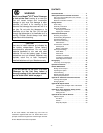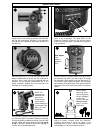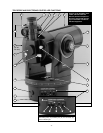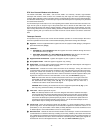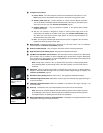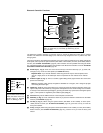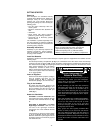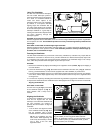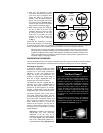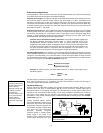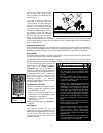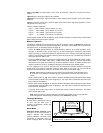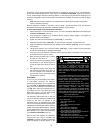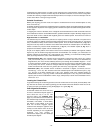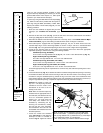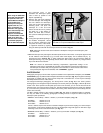
- 11 -
2. Point the main telescope at some
easy-to-find, well-defined land object,
such as the top of a telephone pole.
Center the object, as precisely as
possible, in the SP 26mm eyepiece's
field of view, then tighten the vertical
and horizontal locks (6 and 9, Fig. 1)
so that the tube cannot move and the
object remains centered (1, Fig. 7).
3. While looking through the viewfinder,
turn one or more of the three front
viewfinder alignment screws (4, Fig.
6), until the crosshairs of the view-
finder point at precisely the same
position as the view through the
eyepiece of the main telescope
(2, Fig. 7).
Check that the viewfinder’s crosshairs
and the main telescope are now pointing
at precisely the same object. The viewfinder is now aligned to the main telescope. Unless the alignment
screws are disturbed or the viewfinder jarred, the viewfinder should remain aligned indefinitely.
Tip: If you plan on viewing using higher magnification eyepieces, first locate, center, and focus
the object using a low-power eyepiece (e.g., SP 26mm eyepiece). Then remove the low-power
eyepiece and replace it with a higher-power eyepiece; the object should still be centered in the
field of view. Objects are much easier to locate and center at lower powers; higher powers are
employed simply by changing eyepieces.
OBSERVATION TECHNIQUES
The ETX model telescopes can be used for immediate observation right out of the box. However, becoming
familiar with the fundamentals of a telescope makes subsequent viewing easier and more rewarding.
Choosing an Eyepiece
A telescope’s eyepiece magnifies the image
formed by the telescope’s main optics. Each
eyepiece has a focal length, expressed in
millimeters, or “mm.” The smaller the focal
length, the higher the magnification. For
example, an eyepiece with a focal length of
9mm has a higher magnification than an
eyepiece with a focal length of 26mm.
The SP 26mm eyepiece, supplied with your
telescope, gives a wide, comfortable field of
view with high image resolution, while an
optional SP 12.4mm eyepiece, for example,
provides a smaller field of view but higher
magnification when seeing conditions permit.
Low-power eyepieces offer a wide field of
view, bright, high-contrast images, and less
eyestrain during long observing sessions. To
find an object with a telescope, always start
with a low-power eyepiece such as the SP
26mm. When the object is located and
centered in the eyepiece, you may wish to
switch to a higher-power eyepiece to enlarge
the image as much as practical for prevailing
seeing conditions.
Note: Seeing conditions vary widely from
night-to-night and from site-to-site.
Turbulence in the air, even on an
apparently clear night, can distort images.
If an image appears fuzzy and ill-defined,
back off to a lower-power eyepiece for a
more well-resolved image (Fig. 8a and 7b).
TIPS
FOR BEGINNERS
Too Much Power?
Can you ever have too much power? If the type of
power you’re referring to is eyepiece magnification,
yes, you can! The most common mistake of the
beginning observer is to “overpower” his or her
telescope by using high magnifications which the
telescope’s aperture and atmospheric conditions
cannot reasonably support. Keep in mind that a
smaller, but bright and well-resolved image is far
superior to one that is larger, but dim and poorly
resolved (see below). Powers above 300X should
be employed only under the steadiest atmospheric
conditions.
Most observers should have three or four additional
eyepieces to achieve the full range of reasonable
magnifications possible with the ETX telescopes.
See OPTIONAL ACCESSORIES, page 20.
Fig. 8a & b: Jupiter; example of too much magnification.
Fig. 7: Aligning the Viewfinder.
1
2
(before
alignment)
(after
alignment)
View through the
telescope eyepiece
View through the
viewfinder



